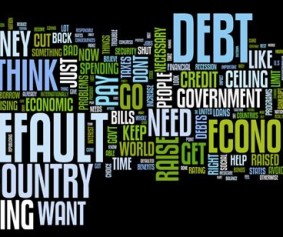The Trickery Behind the Budget/Debt Ceiling Deal
Thursday, October 17th, 2013 @ 9:53PM
Between the Lines
by Gary D. Halbert
It comes as no surprise to my readers that the Senate and the House passed a last-minute bill to reopen the government and increase the debt ceiling. In my October 8 E-Letter, I stated:
In short, I do not believe the government will default on its debt on October 17. Nor do I believe that one penny of the interest on the national debt will fail to be paid on that day or those thereafter.
The Republicans caved on just about all of their demands – not surprising either – and their approval ratings are the lowest ever recorded by Gallup at only 28%.
As you’ve probably heard by now, the bill passed late last night is only a temporary deal to fund the government through mid-January, so a new showdown will begin by the end of the year. We may as well get used to these periodic circuses presented by the idiots in Washington.
What is really interesting and troubling about the bill passed last night is that it SUSPENDS ALL LIMITS on federal spending and the debt ceiling until next year.
Rather than passing a specific “continuing resolution” that would fund the government by a certain amount, lawmakers decided to use specific dates instead. The bill will fund the government until January 15 – no matter how much the government spends between now and then.
Likewise, the debt ceiling is suspended until February 7. Put differently, there is no debt ceiling, period, from now until the first Friday in February next year. This means that the Treasury can borrow whatever it needs to fund government obligations until then, in any amount.
As far as I can tell, this is unprecedented. It certainly has not happened in the last 30 years under presidents Reagan, Bush 41, Clinton, Bush 43 and even in the 2011 budget battle on President Obama’s watch.
The details are still sketchy, but it appears that the Senate and the House could still pass new bills (assuming they can both agree) that could take away this unlimited borrowing ability and prevent the Treasury from spending more money, other than to cover existing debts.
But how likely is that to happen? Not very. And even if Congress could muster the will to pass such a bill to restrict unlimited spending, Obama can veto it. A two-thirds vote is required in both houses of Congress to override the president’s veto.
Whether you are a Democrat, Republican or Independent – liberal or conservative – this budget/debt ceiling legislation should concern you! It may very well be the first step in eliminating any statutory limit on government spending and debt.
As the credit rating agencies start to figure this out, I don’t think they will be happy, and it could lead to more credit rating downgrades for the US. I’ll stay on top of this and keep you apprised.
Bottom Line: Political fights over taxing and spending will persist over the next few months and probably longer. The risk of another government shutdown and doubts about the government’s borrowing authority remain. Businesses and consumers may still spend and invest at the same cautious pace they have since the Great Recession officially ended more than four years ago.
But then again, maybe they won’t.
Most forecasters I read are already lowering their estimates for economic growth for the 4Q and for all of 2014. I’ll have more to say on that in Tuesday’s E-Letter.
Posted by AIA Research & Editorial Staff
Categories: Between the Lines


